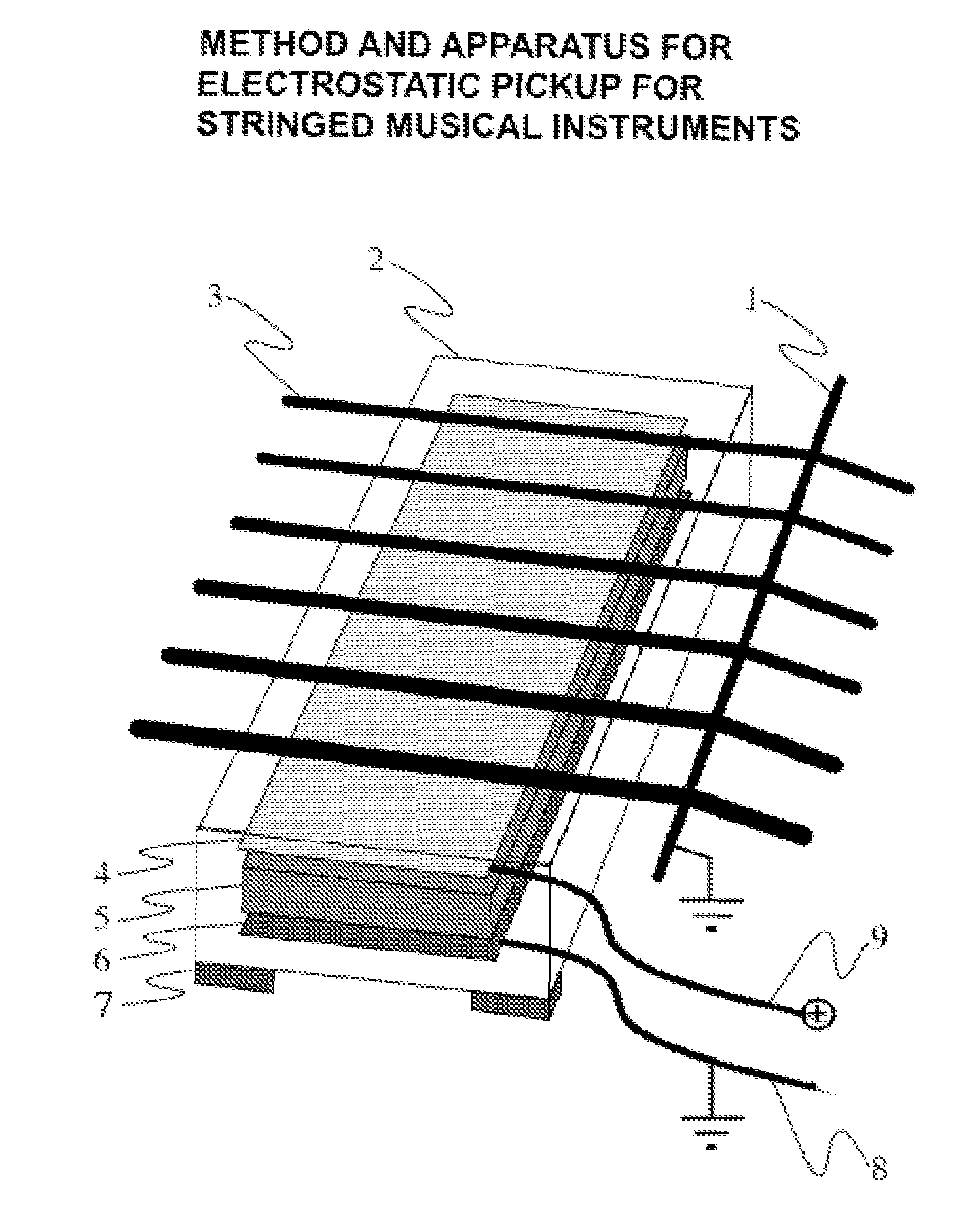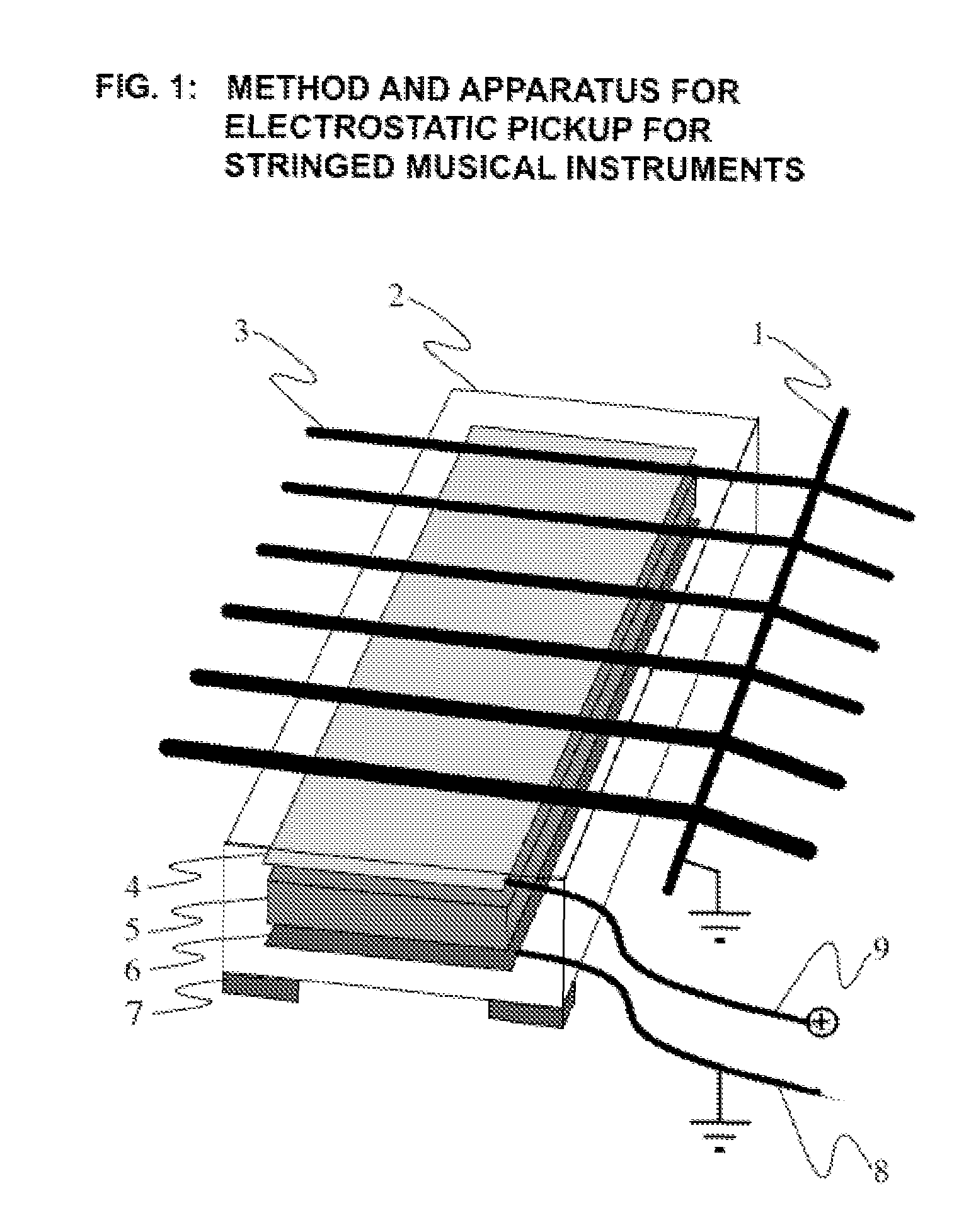Method and apparatus for electrostatic pickup for stringed musical instruments
a musical instrument and electrostatic pickup technology, applied in the field of musical instrument electrostatic pickup methods and instruments, can solve the problems of feedback squeal, microphone amplitude, and none fully addressed the unique requirements of acoustic stringed musical instruments, so as to prevent sudden electrostatic discharge, stop the crackling noise, and eliminate unwanted hum and nois
- Summary
- Abstract
- Description
- Claims
- Application Information
AI Technical Summary
Benefits of technology
Problems solved by technology
Method used
Image
Examples
Embodiment Construction
[0047]Refer to the drawings, in which numbers refer to indicated elements and electronic components are depicted using standard electronic symbols with stated component values. All resistance values are in ohms.
[0048]FIG. 1 shows an electrostatic pickup assembly pointed to by number 2. The illustration is not to scale, but illustrates the relative positions of various components. The outer surfaces of pickup assembly 2 consist of a high dielectric material such as wood or plastic. The pickup is placed in proximity to one or more musical instrument strings 3, strung over a bridge 1. In this illustration the bridge 1 incorporates a metal wire that touches the strings 3, which is used to keep the strings at electrostatic ground potential. In practice, other means may be used to provide the strings with contact to an electric ground. Inside the pickup assembly 2 are two metal plates, the pickup plate 4 and a ground plate 6, which are separated by material 5 with a high dielectric consta...
PUM
 Login to View More
Login to View More Abstract
Description
Claims
Application Information
 Login to View More
Login to View More - R&D
- Intellectual Property
- Life Sciences
- Materials
- Tech Scout
- Unparalleled Data Quality
- Higher Quality Content
- 60% Fewer Hallucinations
Browse by: Latest US Patents, China's latest patents, Technical Efficacy Thesaurus, Application Domain, Technology Topic, Popular Technical Reports.
© 2025 PatSnap. All rights reserved.Legal|Privacy policy|Modern Slavery Act Transparency Statement|Sitemap|About US| Contact US: help@patsnap.com



